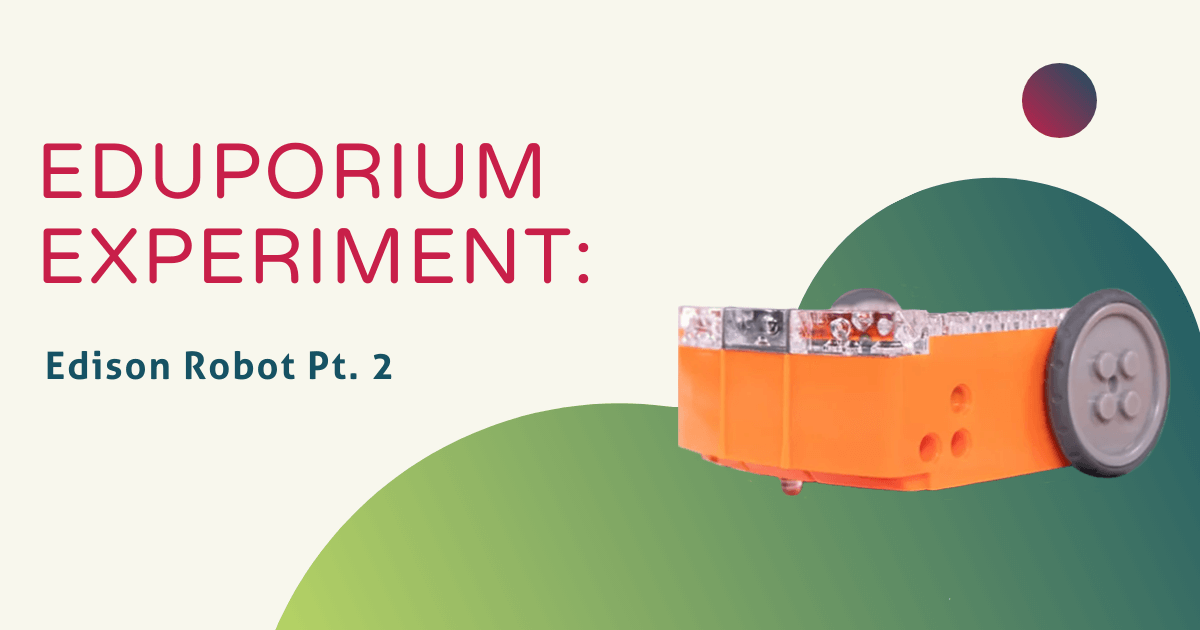A while ago—about a year now at this point—we were introduced to the Edison Robot and did a nice little write-up on it in what you now know as the Eduporium Experiment. We explored some of its many capabilities, including its ability to follow lines and react to sounds even though those are only two of its many. Now, it's revamped, however, and we've got some new stuff to cover, so here we go!
Actually, we'll start with a recap of Edison's original Eduporium Experiment review. Edison is an affordable, programmable, and LEGO-compatible robot designed to introduce young children to the basics of robotics and STEM education. What more could you want in a robot made specifically for students aged 5 and up? Edison is the perfect teaching tool for STEM activities—packed full of amazing features and functionality, like a sound sensor, line tracking sensor, obstacle detectors, and more! Controlled by three buttons on the top, or by remote control, Edison is a fun and easy way to introduce programming and build any robotic inventions of all sizes and shapes.
Okay, that was then. Fast forward to the current time, which is September 2017 in case you forgot, and Edison has an all-new programming environment. Recently released into the STEM community, EdBlocks, as it is known, gives kids the chance to engage in real-world coding while learning with Edison. So, essentially, it has all the same cool features as before, like LEGO engineering, which is one of our favorites, and now kids can control Edison through code. It sounded pretty cool when we first heard about it and, after trying it out, I can confirm that fact.
Programming Edison using EdBlocks is so simple. Like, it's just incredibly simple. It's similar to other robotics tools in terms of the way kids set up their programming, but, since Edison is so unique and moves in a number of unique ways, the actions it can execute are pretty cool. The programming is based around the Blockly language (as you may have guessed from the name EdBlocks), so each block represents a specific value.
There are over 150 blocks available to use, including some for speed, distance, sensory clues, time, and different actions for Edison to do. All students need to do in order to start coding is group them together. Say they want to make the Edison travel forward three units at a slow speed. They can select three from the distance block by clicking a dropdown menu and select a low value from the speed block by also clicking a dropdown that appears. It's literally that easy to learn programming.
The best part is that it becomes even easier to upload the program to the Edison once it's been created. You know those headphone jacks on music devices and phones before Apple created the new iPhone? Right, the headphone jack. Edison has one of those and comes with an auxiliary cable that connects right into your computer's headphone jack. Simply plug it in and then click the 'Program Edison' button in the programming field on your computer and the program will start transferring. It beeped to let me know it was finished and then all I had to do was press the play button to set it in motion—another super simple way to explore programming with the Edison Robot!
To grab an Edison Robot of your own, click below to visit the Eduporium store. And, look out next week for the next edition of the Eduporium Experiment featuring the littleBits Rule Your Room Kit! In the meantime, don't forget to follow us on Twitter and Instagram for more and you might as well like us on Facebook, too!



